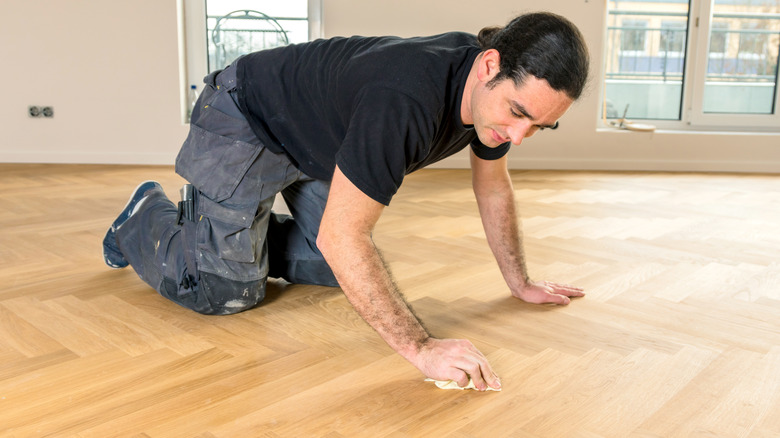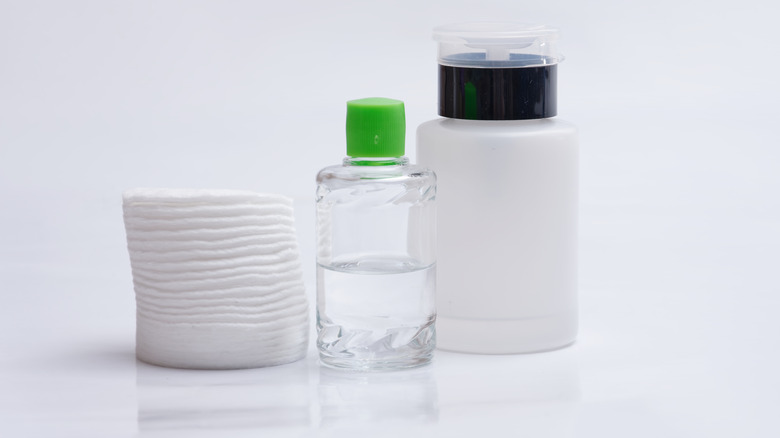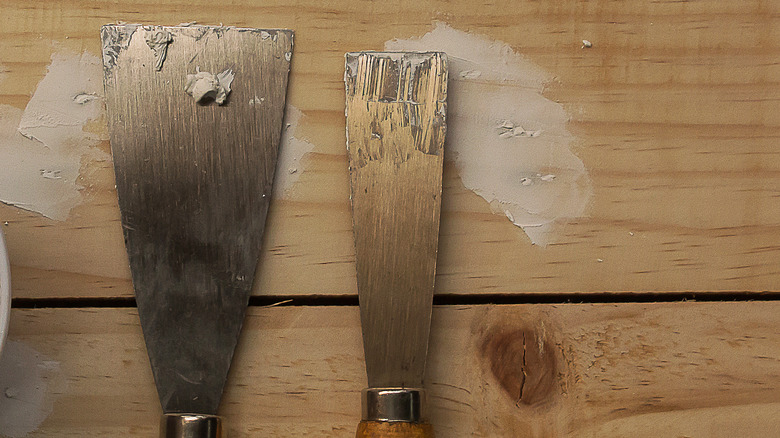Don't Panic If You Spill Super Glue On Wood Floors. Here's A Simple Solution
Though superglue is ideal for fixing a host of broken items and contributing to countless crafting projects, it can become a nightmare when it falls in places where it shouldn't, like your floors. Still, life happens, and with it comes messes. Luckily, there are handy super glue removal hacks for every circumstance. With a little careful handiwork, you can remove super glue from wood floors without ruining them by using acetone.
Of course, time is of the essence when dealing with super glue since it hardens in seconds. Your best bet is to clean it immediately, though be careful not to get glue on your skin. The quicker you tackle it, the less likely it is to bond deeply with the wood and leave stubborn stains. If you spot a fresh spill, grab a clean, absorbent cloth and gently blot the excess glue without spreading it further. Do not rub it since that can only make it worse.
Use acetone or nail polish remover for dried super glue
Naturally, super glue dries in seconds, and you often discover it long after it has solidified. Once super glue has dried, you'll need to use a strong solvent to remove it. Acetone dissolves superglue effectively and is often found in nail polish removers. However, it's a potent solvent and can damage some floor finishes, so test it first on an inconspicuous area to ensure it won't compromise your flooring. If the test is fine, dip a cotton swab in acetone and dab it onto the glue, working cautiously to avoid spreading.
Hold it for 10-15 seconds, until the glue is loose enough for you to scrape off with a putty knife. Immediately wipe the treated area with a clean, damp cloth. Once the super glue is gone, clean the treated area with a damp cloth and a mild wood cleaner to remove any residue. For oil-finished floors, apply a light coat of oil to restore the shine.
Alternatives to acetone
If you have a large or long-standing patch of super glue on your floor that may be beyond the scope of a small bottle of nail polish remover, you may have to turn to professional glue removers. Several commercial glue removers are specifically designed for wood surfaces. Choose one appropriate for your floor's finish and follow the manufacturer's instructions carefully.
Alternatively, if you don't have acetone on hand, there are a few other methods that may work. You can use a plastic scraper or putty knife for small, dried glue bumps. Use a gentle touch and scrape in the direction of the wood grain to avoid scratching the surface. The key is to be gentle, and if the glue doesn't come off right away, don't force it and risk damaging your floor's finish. In terms of natural solutions, essential oils such as citrus oil, eucalyptus oil, or lemon oil can sometimes loosen the glue. Soak a paper towel in the oil and apply it to the glue for five minutes. This may loosen the glue, allowing you to scrape it off. Wipe the surface off afterward with a damp cloth.


